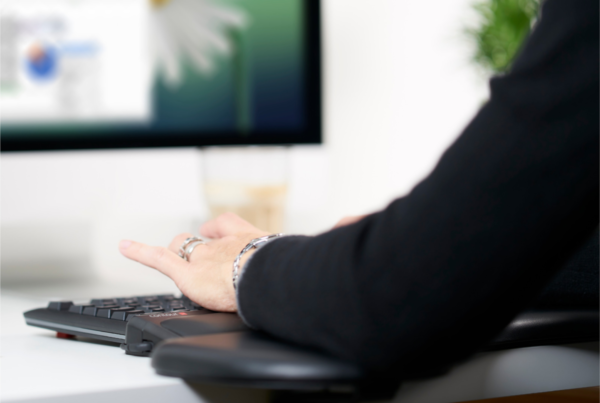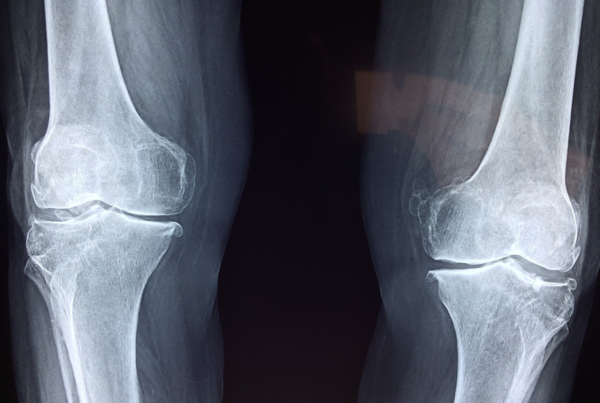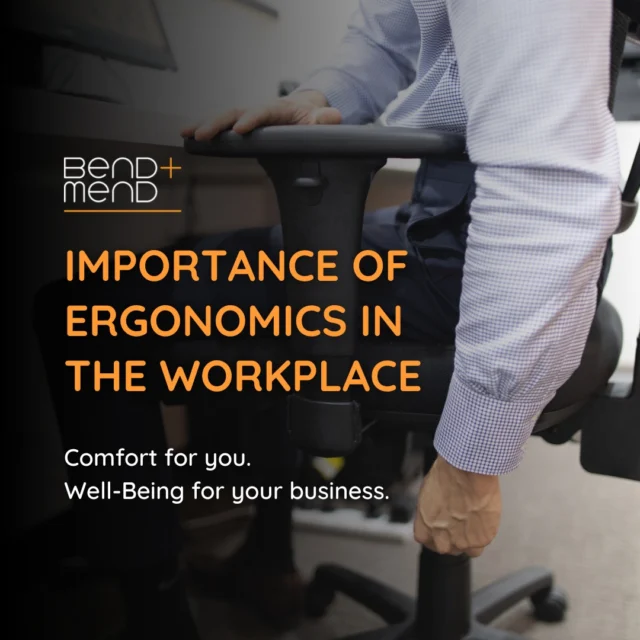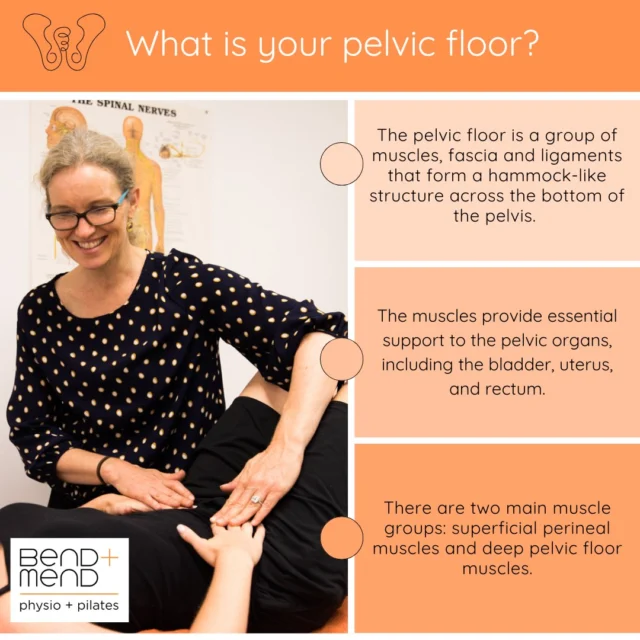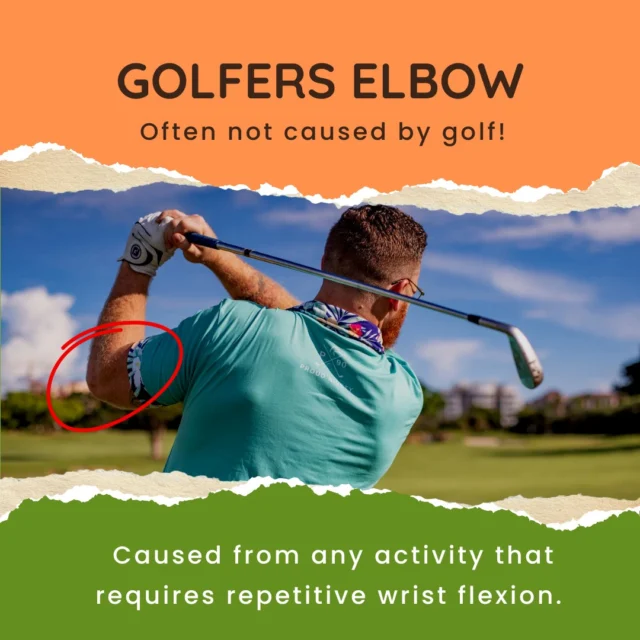1. Feet Come Last
When I ask people about the way they sit at work, they so often tell me that they make sure they “try to have their feet flat on the floor.” Possibly this is one of the easier things to remember, and also to adjust as most people know how to raise/lower their seat even if all the other knobs and buttons are a mystery!
Feet are usually the last thing I worry about in ergonomic consultations. It’s much more important to get the height right for your keyboard and monitor. When everything else is feeling good, your feet will either feel comfortably supported or dangling. If dangling, then you might like a footrest.
2. Height to Get Arms Right
THIS is what matters more. You need to raise your seat enough so that you aren’t having to hitch up your shoulders or arms to type. Hitching like this uses much more muscular strain and adds to all that tension many people have in their neck and shoulders.
Try this as a test:
Wheel yourself slightly away from your desk, let your arms hang by your sides, then bend your elbows to 90⁰ with hands positioned as you would for typing.
Now, if you can wheel yourself forwards over the keys like this you’re doing well. But if your arms are colliding with the desk, you need to raise that seat.
3. Use Your Backrest
If your job involves sitting for long periods, then you should be using your backrest for a large proportion of the time. I commend people for their very well-intentioned efforts to “sit up straight” without leaning on the backrest, but this isn’t sustainable for any length of time. This is such an important topic, I wrote a whole (fascinating!) blog on it. Click here to see if you pass the test!
4. “Perfect Posture” is a Discouraging Myth
I sympathize with people who say to me “I know how I should sit all the time, but I just don’t do it for some reason.” Especially those suffering with pain. The implication is that this is their failure, and that if they were more disciplined they would “just sit properly” and have less pain. Having branded themselves as “being bad at posture”, there is a strong temptation to give up and stop trying altogether.
In my experience, the idea that a person should be able to stop themselves from ever straying into poor posture is a myth. Sadly, this myth probably exists because of people like me! I’m sure that in trying to simplify postural advice for people over the years, I’ve sometimes given the false impression that perfection is the goal.
Rather than giving yourself a hard time when you notice your posture has lapsed, you could take half a second to congratulate yourself that you noticed the change. Then take the other half of that second to make a little correction.
I’m obviously an ergonomics nerd but, as I’m sure my patients will attest, you’ll see me in slumped positions too. But never for long. As I’ve learned enough to habitually notice postural change and correct it. Notice and correct. Notice and correct.
That might sound like a bleak outlook but before you run for the hills, please take solace! Firstly, new habits can be formed in just a couple of weeks of effort; things will be much easier from then on. And second, making small adjustments slightly more often can make the critical difference between pain and comfort.
5. For Proper Results, Get Proper Help
Diagrams, checklists and articles like this are one thing. Having an interactive, one-on-one consultation is another. Ergonomics can make life easier and more comfortable but it’s all in the details. An experienced eye might give you that “eureka” moment when you finally get things right for you.
Blake and the team at Bend + Mend in Sydney’s CBD are available for pragmatic, no-nonsense services to improve health in your workplace. This includes ergonomic workstation assessments for individuals and groups. All enquires are welcome via physio@bendandmend.com.au

